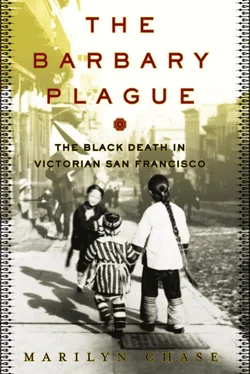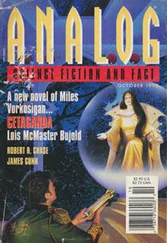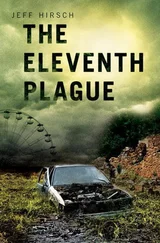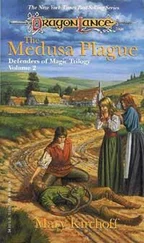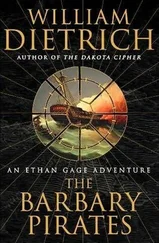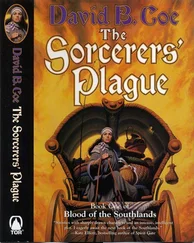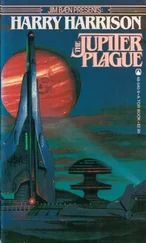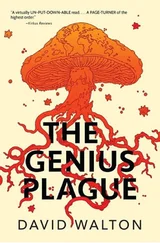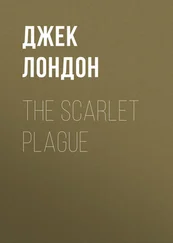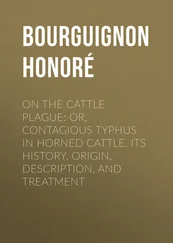
CRADLING AUTOPSY SAMPLESfrom Wong Chut King in glass vials, city bacteriologist Wilfred Kellogg boarded a streetcar. When the driver signaled the Ferry Building stop, Kellogg got off and bought a ticket for Angel Island. Ascending the ramp to board the ferry, he no doubt saw the water afloat with garbage, the screaming gulls swooping down to pluck tidbits from the waves, and the rats gorging at low tide.
The ferry churned north, over waters ruffled into whitecaps by the stiff bay winds. Past the stony outcrop of Alcatraz, the ferry continued on toward to the tree-dotted, tan hulk of Angel Island. In mid-bay, as the ferry slapped over swells, Kellogg clutched his samples more tightly for safety. One misstep could send the stoppered tubes crashing to the cabin floor, and the translucent pink lymph fluid and bits of bloody pulp would be lost amid shards of glass. The mystery of Wong’s death would remain unsolved.
Forty minutes later, the vessel swung around the north side of Angel Island, cut its engines, and nosed into Hospital Cove. Kellogg steadied his sea legs and lurched down the ramp onto the pier, then walked on to the headquarters of the quarantine officer, Joseph J. Kinyoun. Kinyoun’s job was to inspect arriving ships, check the passengers and crew, isolate the sick, fumigate the cargo, and keep diseases out of the country. It was his duty to impose federal standards of hygiene on this port city that, after Washington, D.C., must have seemed like a frontier outpost. Sent to San Francisco from the capital just ten months before, he was a disease warrior. Angel Island was his fortress, and all San Francisco Bay was his moat.
Kinyoun was a “Pasteurian,” a doctor trained in Europe in the new science of bacteriology founded by the patriarch of infectious diseases, Louis Pasteur. He was thirty-nine years old, portly and balding, with a cleft chin and an obstinate streak. He had a tender ego and a gut to match. Kinyoun was unsuited to his politically turbulent job. A public health officer needs the hide of a pachyderm, he told colleagues. 1Instead, he had the skin of an onion.
Conceived on the eve of the Civil War, Joseph James Kinyoun was born in East Bend, North Carolina, in November 1860. The son of a Confederate army surgeon, John Hendricks Kinyoun, and his wife, Bettie Ann, Kinyoun spent his infancy in the care of his mother, who prayed and pined for her soldier husband. The Sunday after Christmas of 1861, Bettie Ann took up her pen to send him all the home news of churchgoing, hog raising, and Negro sales. The centerpiece of the letter was a sketch of their thirteen-month-old Joe, a whirlwind who was just then playing at her feet.
“Our little darling,” she wrote, “…has improved a great deal in walking, and you would be pleased to see him running across the room which he does sometimes twenty times before he seems tired. He has a fashion of walking with his little hands laid upon his breast, which makes him totter a good deal…. [H]e eats as hearty as a little shoat.” 2
When the Civil War ended, the elder Dr. Kinyoun returned to practice medicine. His son would follow in his footsteps. Despite upheaval in family life—relocation to Centre View, Missouri, and the death of his mother when he was twelve—Joseph Kinyoun found his calling early as his father’s apprentice. Following his training at St. Louis Medical College in Missouri, and then at Bellevue Hospital Medical College in New York, where he completed his M.D. in 1882, he returned to Missouri to join his father’s medical practice. 3
While at home in Centre View, he met a young Missourian named Susan Elizabeth Perry—Lizzie—and married her. They were both twenty-three. Within a year Lizzie bore a girl who died in childhood. 4
While working with his father, Joseph Kinyoun started reading exciting reports about the French chemist Louis Pasteur, who was exploring the world of microbes. Through the lens of a microscope, Dr. Kinyoun immersed himself in the study of bacteria as agents of disease.
Kinyoun returned east with his bride to continue his study of bacteriology at Bellevue Hospital, and in 1886 he joined the U.S. Marine Hospital Service, the federal agency that inspected ships for disease, imposed maritime quarantines, and tended sick seamen. The service needed doctors like Kinyoun, with a passion for bacteriology, who could infuse service operations with the powerful new science. So the fledgling physician was asked to set up a bacteriology laboratory at the quarantine station in New York. It was in an unimposing one-room lab, up in the attic of the Marine Hospital on Staten Island, that he started to make his name.
A ship landed in New York Harbor with passengers racked by cramps and relentless diarrhea. Local clinicians feared the worst—cholera—but nobody knew for sure. The symptoms were variable and vague; they could mimick those of other diseases. It was Kinyoun’s job to confirm it or rule it out. From the ailing passengers, he obtained samples and prepared slides. Squinting through the microscope lens, he saw a swarm of short, rod-shaped bacteria with hairy little fringes called flagellae, swimming around on the glass slide. It was Vibrio cholerae , the bacteria that causes cholera.
This was the first bacteriologic diagnosis of cholera in the United States, or anywhere in the western hemisphere. 5At age twenty-seven, Joe Kinyoun was a force to reckon with.
In 1891, Kinyoun moved his one-room operation to Washington, D.C., to what came to be called the National Hygienic Laboratory, where he gained broad powers to pursue bacteriologic diagnoses of other epidemic diseases. Out of his slides and test tubes emerged the embryo of a vast biomedical research empire that decades later would become known as the National Institutes of Health.
But back in 1899, Kinyoun was simply helping America catch up with Europe, where the original microbe hunters, like Pasteur in France and Robert Koch in Germany, had begun the revolution in infectious disease study. Kinyoun now made a pilgrimage to the mecca of microbiology, studying at the Pasteur Institute in Paris and at Koch’s laboratory in Berlin. From Koch he learned the classic protocol, essentially a recipe for how to prove a germ caused a disease: 1) isolate the germ from a patient; 2) grow the germ in pure culture; 3) inoculate the germ into a lab animal and reproduce the disease; and 4) isolate the identical germ from the test animal. A century later, this circle of proof would continue to govern the diagnosis of infectious diseases. He also learned how to make an antitoxin against diphtheria by harvesting disease-fighting antibodies from the blood of horses exposed to the germ.
When he returned to the National Hygienic Laboratory in the United States, Kinyoun brought with him the European techniques that helped to transform the practice of medical diagnosis, from the ancient bedside art of observing symptoms to a lab science using microscopes, cultures, stains, and slides. Symptoms like fever and pain could be vague and misleading. Bacteriology offered a way to test a diagnostic hypothesis. Its truths were verifiable; it had the beauty of certainty. Or so he thought.
Just after Kinyoun’s National Hygienic Laboratory marked its first decade, his boss cut short his tenure and gave him a job far away. The supervising surgeon general of the Marine Hospital Service was Walter Wyman, a great gruff walrus of a man. A brusque bachelor, Wyman regarded the men of the corps as his family, and he was famed for abrupt transfers. He also regarded his primary mission as the imposition of the police powers of quarantine. 6Now, quarantine duty was calling from the Pacific Coast, and he had Kinyoun in mind for the job.
Читать дальше
